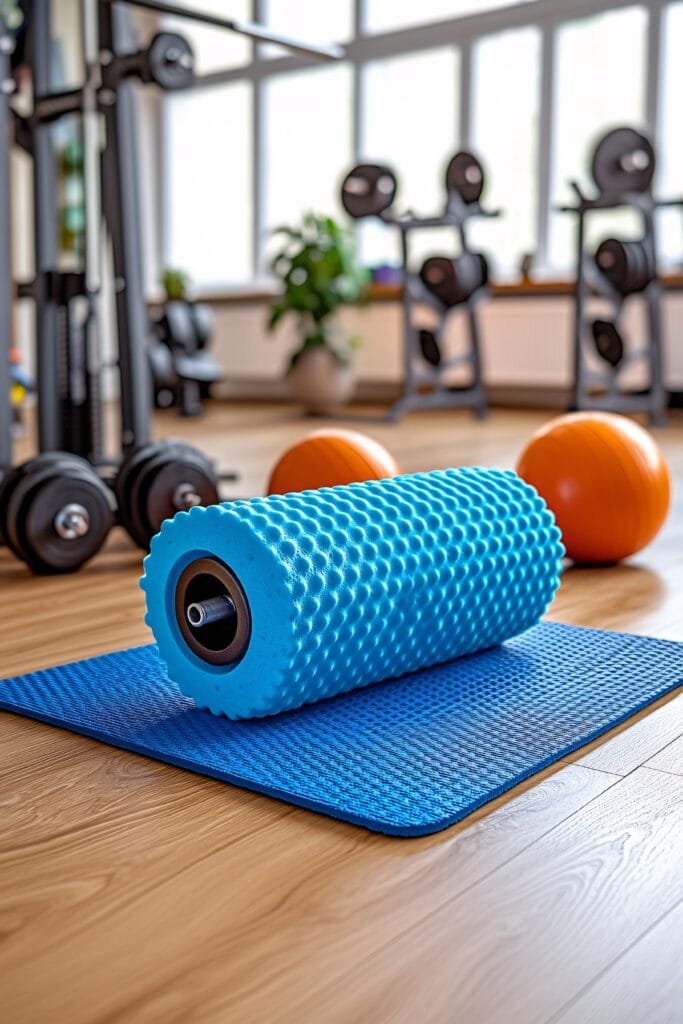
Building muscle is often associated with lifting heavy weights and maintaining a high-protein diet, but rest and recovery are equally critical components of the process. Proper recovery allows your body to repair, grow stronger, and prevent injuries, ensuring consistent progress in the gym. This blog explores the key elements of rest and recovery, including sleep, rest days, and techniques like foam rolling and stretching.
The Role of Sleep in Muscle Growth
Sleep is the foundation of recovery. During deep sleep, your body undergoes critical repair processes, including muscle recovery and growth. Here’s why sleep is vital:
- Hormonal Balance:
- Sleep promotes the release of growth hormone, essential for muscle repair and fat metabolism.
- Poor sleep can increase cortisol levels, a stress hormone that breaks down muscle tissue.
- Protein Synthesis:
- During sleep, your body synthesizes proteins to repair muscle fibers damaged during workouts.
- Improved Performance:
- Quality sleep enhances focus, energy, and endurance, leading to more effective training sessions.
Tips for Better Sleep:
- Aim for 7-9 hours of quality sleep per night.
- Maintain a consistent sleep schedule.
- Create a relaxing bedtime routine, such as reading or meditating.
The Importance of Rest Days
Rest days are not optional—they are essential for muscle recovery and overall performance. Overtraining without adequate rest can lead to burnout, injuries, and diminished gains.
- Muscle Repair and Growth:
- Muscles grow during rest, not while training. Rest days give your body the time it needs to rebuild and strengthen.
- Injury Prevention:
- Continuous training without breaks increases the risk of overuse injuries, such as tendonitis or stress fractures.
- Mental Recharge:
- Rest days help prevent mental fatigue and keep you motivated for your next workout.
How to Structure Rest Days:
- Include at least one or two rest days per week, depending on your training intensity and experience level.
- Use active recovery techniques, such as light yoga or walking, to keep blood flowing without stressing your muscles.
Recovery Techniques: Foam Rolling and Stretching
Incorporating foam rolling and stretching into your routine can enhance recovery, improve flexibility, and reduce soreness.

- Foam Rolling:
- Foam rolling is a form of self-myofascial release that targets tight muscles and fascia.
- Benefits:
- Relieves muscle soreness and stiffness.
- Improves circulation, promoting nutrient delivery to muscles.
- Enhances range of motion.
- How to Use:
- Spend 1-2 minutes rolling each major muscle group after workouts or on rest days.
- Stretching:
- Stretching improves flexibility, reduces tension, and supports proper muscle alignment.
- Benefits:
- Prevents muscle imbalances.
- Reduces the risk of injuries.
- Promotes relaxation.
- How to Use:
- Perform dynamic stretches before workouts to warm up muscles.
- Focus on static stretches after workouts to lengthen and relax muscles.
Nutrition’s Role in Recovery
Proper nutrition complements rest and recovery by providing the building blocks your body needs to repair and grow.
- Protein: Essential for muscle repair. Include lean meats, eggs, or plant-based proteins in your meals.
- Carbohydrates: Replenish glycogen stores and fuel recovery. Opt for whole grains, fruits, and vegetables.
- Hydration: Staying hydrated helps maintain muscle function and prevents cramps.
- Supplements: Consider options like whey protein, BCAAs, or magnesium to support recovery if needed.
Final Thoughts
Rest and recovery are as important as your workouts and nutrition in achieving muscle growth. By prioritizing sleep, scheduling rest days, and using techniques like foam rolling and stretching, you’ll optimize your recovery and ensure consistent progress. Remember, muscle building is a marathon, not a sprint—listen to your body and give it the care it deserves.

